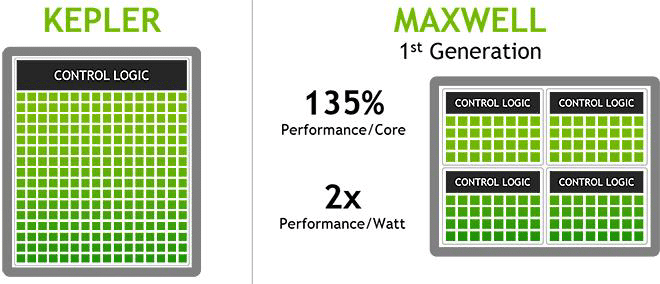Nvidia GM204 Maxwell GPUs May Jump From 28nm to 16nm, Skip 20nm
Ryan Martin / 10 years ago

The launch of Nvidia’s GM204 Maxwell-based video cards is expected to be fairly close. We should see the GTX 800 series based on the new architecture by the end of the year for sure, current rumours are touting the third quarter which means by the end of September. There will not be any process node upgrades with the GTX 800 series despite TSMC being ready with their 20nm process, the current 28nm process will prevail with the first wave of products, the “A Stepping”. The GTX 880 Ti, GTX 880, GTX 870 and GTX 860 will all launch with a 28nm GM204 GPU. Expect the GTX 880 Ti to have the fully enabled and unlocked GPU die and as you descend down the stack more parts of the die will be soldered off.
The surprising news is that next year the Maxwell “B Stepping” will involve a die-shrink. However, this is not going to be a 28nm to 20nm shrink but instead a 28nm to 16nm shrink. Nvidia will apparently be the first to make use of TSMC’s 16nm FinFET technology. This will take place mid-Q1 (so in February sometime) and means that there will be a 4-6 month spacing between Maxwell A and B. Interestingly the 16nm variants are rumoured to get the same names as their 28nm predecessors, this may confuse the retail product stack even more as we’ll end up with two GTX 880 Tis, one 28nm and one 16nm. This won’t be the first time Nvidia released a new stepping into the same product series, we saw two GK110 steppings with the GTX 700 series. This is what allowed graphics cards like the GTX 780 GHz Edition to be released when other GTX 780s based on the first GK110 stepping struggled to get near those frequencies. However, with the GK110 example no die-shrink was involved. Due to that fact we could see alternate outcomes. Nvidia might potentially release a new series, the GTX 900, where they will re-release the GTX 800 product stack but at 16nm. Or we might see the 16nm parts re-released within the existing GTX 800 series with new names, such as adding a “+”, changing the 0 to 5 or adding some other kind of name signifier.
Source: SemiAccurate, Via: VideoCardz
Image courtesy of Nvidia



















